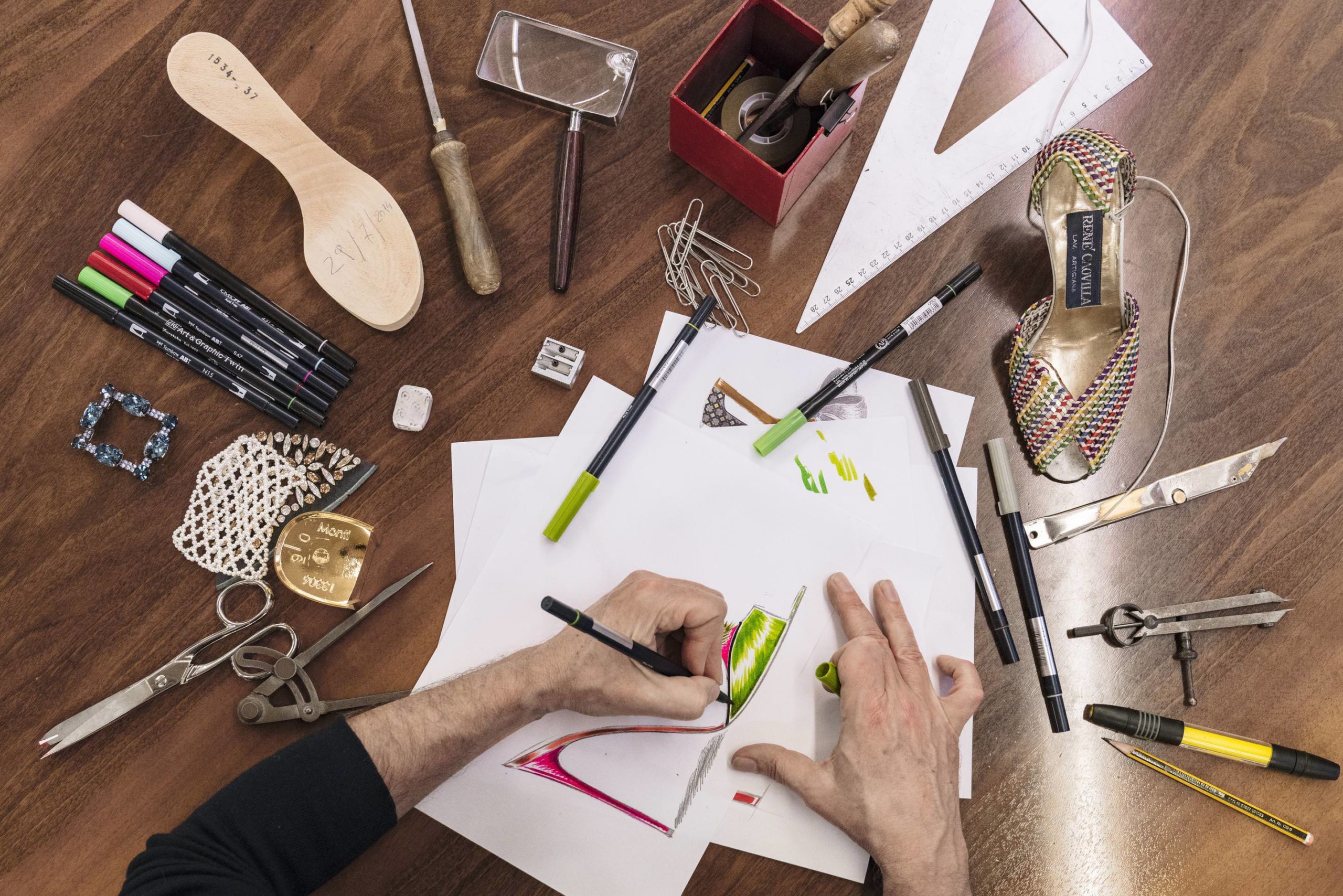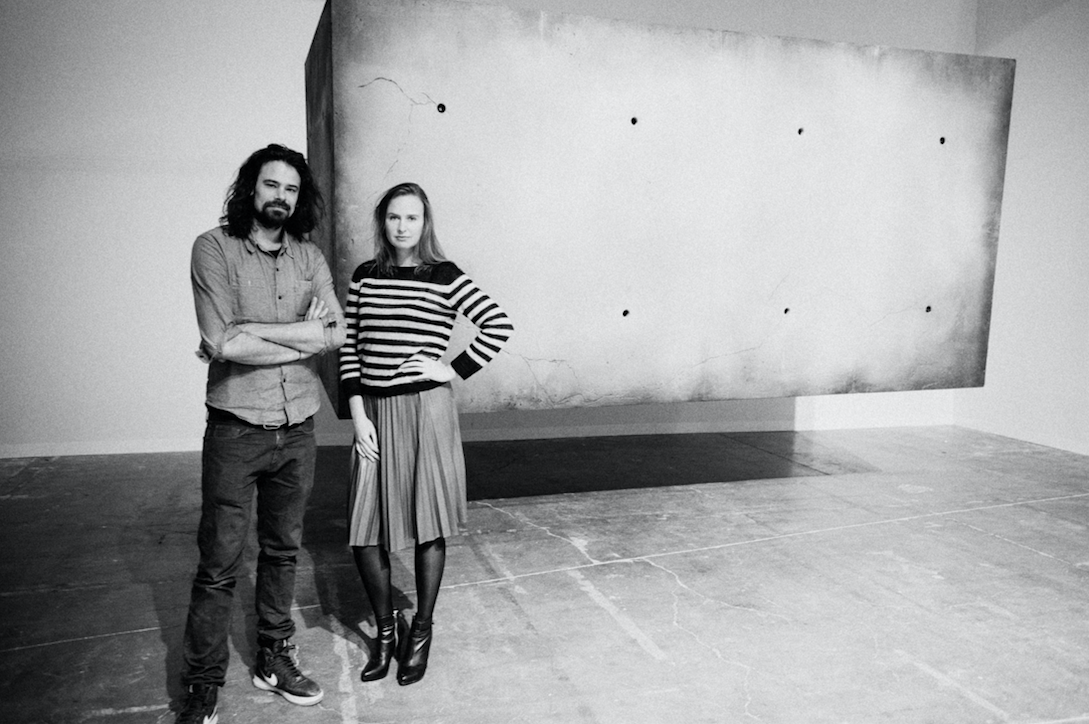Evie Falci is a meticulous, deliberate creator. She manifests boundless beauty through mapped-out ideas, and thereafter, careful constructions. Arranged swirls of assorted rhinestones are stretched atop denim canvases, sturdy collections of spikes and studs are punctured through leather canvases, and nearly all of her other child-like craft objects—like pom-poms and googly eyes—are the bulk of her creations. Each piece of hers develops its own story, and is intended to be capable of making you feel something. Whatever that is, she explains, is up to you, but the magic behind it, as you’ll gain from our discussion below, is truly up to her.
In her at-home studio in Brooklyn, we chatted about her overall creative practice, her displayed piece of work, Aysu, in the Mandarin Oriental, New York’s Suite 5000, and her take on spirituality, inspiration, and magic.

Yayoi Kusama.
Courtesy of the Hirshhorn Museum and Sculpture Garden.
WHITEWALL: Your approach (rhinestones on denim, studs on leather) screams, “More is more.” Is that intentional?
EVIE FALCI: Oh of course. I love decadence and glamour.

Hermès’ fall/winter 2017-18
Photo by by Jean-François José
WW: Did you naturally gravitate toward that? How did you choose those materials?
EF: It was a pretty organic, natural progression. I studied painting and drawing, and all of the stuff you study in art school, and I was making these very flat drawings that were vibrating and were very activated, and then I started making mixed media things, and adding materials onto it, and I realized that I was more interested in the formal games that I was playing rather than whatever content the drawings had figuratively. Also, I had an aha moment of the material as metaphor—that the materials were loaded with content before you even use them—and I’m trying to use them in a more phenomenal, logical way. And then also, just collecting and gathering materials, like a magpie—things that are inherently attractive and then thinking about how they’re used and what they mean and so on.

Berluti fall/winter 2017.
Courtesy of Berluti.
WW: What kinds of traditions or cultures in particular—regarding patterns, textiles, and even mandalas perhaps—do you gain inspiration from?
EF: It’s very varied. From either Islamic architecture to certain fashion designers, to images of the Hubble telescopes makes, to monks making sand paintings. It’s all in the mix. I don’t really keep a lot of reference material around in my studio, but I like it to be more of this weird soup of all these things. I’m also really interested in aboriginal art, and body modification from around the world. I think that most artists are very observant of the world that they live in—both visually and the great world at large, and I hope that that comes across in the work.
WW: What is your take on “magic?”
EF: There’s this text that Aldous Huxley wrote called “Heaven and Hell” and one interesting point that he made was: Why do human beings value gold and gems? Aside from the fact that they’re shiny and beautiful, and rare and precious, they’re basically useless. A point that he made was that you have to go back in time where there’s no electricity, no neon lights, and things were hard to make. And these were so beautiful, and these crazy things seemed like magic.
Thinking about crystals and gems having magical properties is a very ancient idea in which I love. They were also links to the heavenly realms, or the spirit realms—these very charged objects that could psychically connect you or transport you, and I really love that idea. Obviously these aren’t real gems, but they operate in a similar way.
I’m interested in objects that have very real power and presence—both in terms of the way that they’re made, and the materials that they’re made from, and whatever motivation of the particular individual making it is.
WW: How do you ensure your pieces hold the certain energy you need, and vibrate the way you want them to?
EF: There are ancient things where certain metals or colors are attribute to certain deities, like green and the metal copper are associate to Venus, the color red and the metal iron is related to Mars. The irony makes perfect sense.
Some things are very specific symbols or sidles, or are related to certain texts in a very direct way, although there are certain things where it’s like, “oh yeah, that’s an image for the sidles of Saturn” or “that’s relating to another planet or a spirit” or whatever. But ultimately, that’s not very important to me—that an individual be able to read the code or the key of what all of the specifics icons relate to in as much as it’s important for me to even just think about trying to connect with that type of psychic space or spiritual space that I don’t think is very present in most people’s lives, or in modern life.
WW: Your piece Aysu in Mondrian Suite 5,000—how did this piece come about?
EF: That came about because one of the things that I’m consciously trying to do is figure out how to have the same impact while still working on a smaller scale, as the big work, which has been challenging—a good challenging.
I showed it at this gallery, 33 Orchard, which was part of a memorial show to Hudson, for his gallery, Feature Ink. But in terms of how I constructed that piece, with all of them, I basically start more with the form, and map out certain shapes and things, and then, I’ll decide on a color palette, and say, “okay, these colors and these forms—this is how it’s vibing.” It’s all very organic. I don’t make preliminary drawings or sketches. Things change and I never know what a painting is going to be until it’s done.
WW: How long, on average, does it take to create one of your pieces?
EF: It depends. The stud ones, I’ve been able to cruise a little bit faster because the pieces are larger, the smaller the rhinestones are the longer they take to apply. But on average, it maybe takes about, idk, 80-100 hours. And that’s also because I’m self-editing, where it’s like I’ll put something down and it didn’t work, and I take it apart and rework it. So factoring all of that in the total amount is somewhere in that zone.








